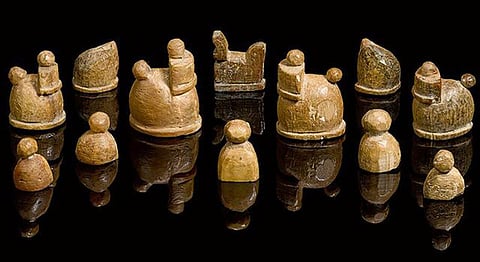
- HOMEGROWN WORLD
- #HGCREATORS
- #HGEXPLORE
- #HGVOICES
- #HGSHOP
- CAREERS
- ABOUT US
- CONTACT US

India has made several foundational contributions to global knowledge, from mathematics and medicine to modern technology. One such influential yet often overlooked contribution is the game of chess, which originated in India around 1,500 years ago during the Gupta Empire. Known as Chaturanga, the game was based on the four divisions of the Indian military — infantry, cavalry, elephants, and chariots — forming the basis of modern chess pieces
India is a land of great inventions. From the addition of the zero and the place value system in mathematics which changed the face of arithmetic and algorithms, to Ayurveda, the traditional school of sciences or the cataract surgery which was invented in the 3rd century, or the USB which made data saving and transfer so feasible and time saving, Indian contributions have immensely accelerated the growth of human development and brought about revolutionary changes. The western world has now started taking cognizance of our potential and have adopted most of our practices.
Did you know that one such invention, which is now a very respected and sought after sport at the global level, the game of Chess, has its roots in India? With 37 Grandmasters of this game, including former World Champion Viswanathan Anand, being of Indian origin, one holds great pride that they have taken this game of the Indian soil to the international tables.
Origin
1500 years ago during the Gupta Empire, the game of Chess or Chaturanga, came into existence. This game flourished in India during the 6th Century, which was based on the four divisions of the military - infantry, cavalry, elephantry, and chariotry or the modern day pawn, knight, rook and bishop – hence the name Chaturanga. The game was a battle simulation game which rendered Indian military strategy of that time. This game has two of the most essential features inspired from the battle formations of the Indian epic of Mahabharata, that different pieces have different powers and victory depended on the survival of one piece – the king of the modern chess. In the medieval times, if the king surrendered, it signifies the loss of his kingdom, exactly the way one loses the game of chess when the king is captured.
India’s mathematical enlightenment is sighted to explain the mathematical revolutionary of the original chess board. Based on the wheat and chessboard problem, chess was designed for an “Ashtapada”, 8X8 square board, named after the spider in Sanskrit: a legendary being with eight legs. Other Indian boards included the 10×10 Dasapada and the 9×9 Saturankam. There were no black and white squares on them for thousands of years, the way we see them today.
The Legend Behind The Wheat Chessboard Problem
When the tyrant king Shihram ruled over India, he had a wise man in his court who had invented the game of chess to show the king how important everybody is, who lives in his kingdom, even the smallest amongst them. He suggested that the king requires the queen, rooks, bishops, knights and pawns to survive, just like in the real life.
The king understood this very well and wanted to reward the man with gold, silver and other valuables. The king loved the game and mastered it in due time. He also encouraged people from his kingdom to play the game. But the wise man declined it politely and asked for a special wish. He wanted the king to place one grain of wheat on square, two on the second and keep doubling up the wheat until the last square. Initially the king was disappointed, but later when he asked to fill the chessboard according to the man’s wishes, he realized his mistake of undermining the small things.
Because the mathematical exponential added up to an incredible amount of 1,84,46,744 trillions of wheat grains, which no kingdom could ever fulfill!
Travelling of this came all round the world
Originating in Northern India, this game spread across Persia. It also spread to China during the Hans Dynasty. When the Muslims started their reign over Persia, they too adapted the game and finally spread it over Europe during the Moorish Conquest of Spain.
The story behind the Modern Name – Chess
When a form of Chaturanga spread to Persia, the Persian rulers changed the king from Sanskrit ‘rajah’ to the Persian ‘shah’. In Persia, checkmate was called “shaamat”. When it went to Europe, countries like Germany called it Shach- meaning game of the kings. Finally the French coined the term “eches”- meaning to fail, who’s English version is chess.
Today, Chess has become one of the most engaging games in the world. But this game is also another feather in India’s cap, another evidence of our intellect, our rich history and culture, our belief and usage of science and mathematics in every aspect of our lives. From eating habits, rituals to the calendars being marked, everything has a proper reasoning behind its formation and has been practiced throughout generations. It shows the diversity of India’s contribution to the world.
If you enjoyed reading this, here’s more from Homegrown:
Meet The 7 Fearless Indians Pushing Extreme Adventure Sports To Its Limits
